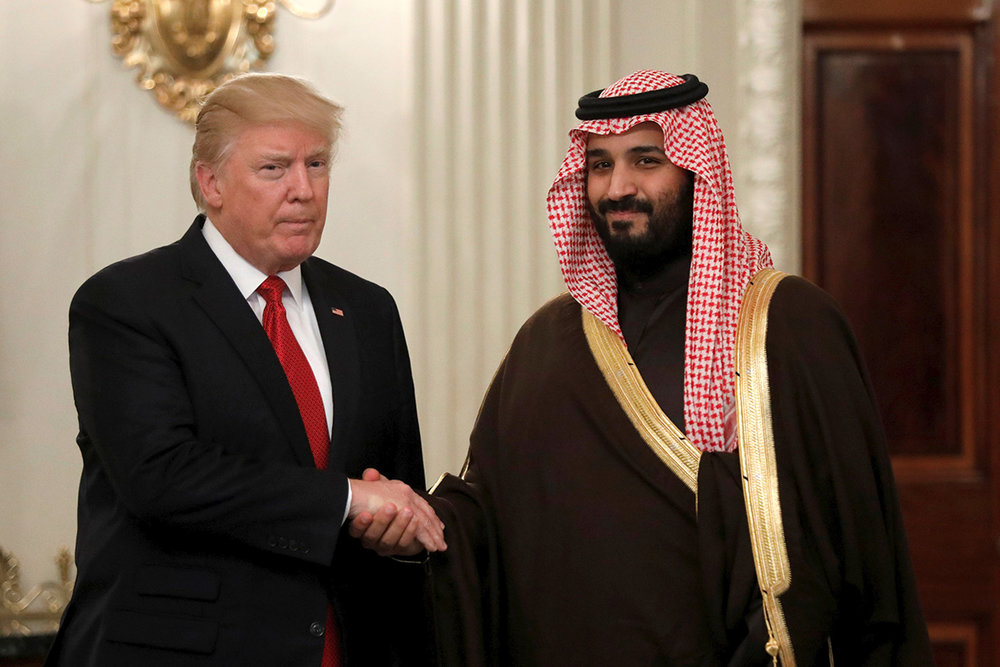Union of Iranians against Washington and Riyadh

TEHRAN _ In recent months, we have been witnessing the unification of the United States and Saudi Arabia against the regional policies of the Islamic Republic of Iran.
Strengthening ISIS and Takfiri groups, preventing the establishment of peace and stability in the region, creating constant crises in the Islamic world, etc. were among the joint approaches by Washington and Riyadh to prevent the victory of the axis of resistance in the region. On the other hand, the United States and Saudi Arabia made their best efforts to prevent ISIS defeat in Syria and Iraq. However, ISIS's death destroyed many of the Saudis' and White House's equations and plans in the West Asian region.
The United States and Saudi Arabia are now struggling to maintain the security crisis in the region on the one hand, and on the other hand, they intend to redefine ISIS survivors in the region. However, Donald Trump and Mohammed bin Salman (who have become the main leader of the Riyadh political and military equations) are unwittingly completing the puzzle of their simultaneous collapse in the region as well as in the international system.
An overview of the recent analysis by the New York Times reveals how confusing Washington and Riyadh have been in their joint plans against Iran. This common feeling of confusion shows itself in the behavior, conduct and speeches of American and Saudi politicians. The New York Times recently outlined the impact of anti-Iranian policies of American and Saudi Arabian governments on public opinion in Iran. We read in this article that Donald Trump and Saudis have united Iranians.
At the beginning of this note, the writer refers to various political beliefs in the Iranian society and mentions that the change in the Iranians' approach (and their political alliance) can be due to two main factors; one is Donald Trump's election as the U.S. president, and next is the increase in Saudi Arabia's opposition to Iran and the tension caused by Crown Prince Mohammed bin Salman. The New York Times sees Iran's pivotal role in destroying the ISIS terrorist regime in Syria and Iraq as a common issue of which all Iranians are proud. It writes: "Two people are the stars of Iranian in these days; Major General Qasem Soleimani and Mohammad Javad Zarif."
The writer of this article believes that Trump and the Saudis led it to a point that now the Iranians are more likely to support the view that Washington and Riyadh are not to be trusted, and that Tehran has become more powerful than before. There are some points that need to be taken into consideration in analyzing the content of this article by New York Times:
Basically, the United States and Saudi Arabia have started a joint venture against Iran. However, this investment has failed now. During the presidency of Barack Obama, there were disagreements between Washington and Riyadh over issues such as how to confront Iran (especially with regard to the Joint Comprehensive Plan of Action). Saudi officials have always believed that if the Obama presidency ends and Democrats do not succeed in regaining power in the United States, the honeymoon will start for the United States and Saudi Arabia, and they can, with the cooperation of each other, restrain the axis of resistance.
Saudi authorities also believed that in case of Trump's presence at the White House, the American-Saudi project could have further support for ISIS and Takfiri groups in the West Asian region. As a result, during the 2016 presidential campaign, Saudi officials backed Trump. Even some of Trump's election commentaries against the Saudis didn't prevent the Saudi House to desist its support for Trump. All these were because Riyadh authorities sought to change the existing equation and transition to a situation that they saw as "a desirable situation."
Finally, the Saudis wishes came true and Tramp became the President of the United States. Riyadh authorities tried to prove their goodwill to Trump, and while giving massive arms ransoms to the United States, played exactly on the United States ground. Trump also welcomed the Saudis' actions and became the main supporter of the Saudi crimes in the region, especially in Syria, Iraq, Yemen and Bahrain. However, the common prediction of the Americans and the Saudis didn't come true! In spite of the synergy between Washington and Riyadh in confrontation with Iran, eventually the regional equilibrium was such that America and Saudi Arabia did not reach their common regional goals. The defeat of ISIS in the region and the failure of the White House and the Saudi House to prevent the emergence of the Resistance Front, have turned them into passive and defeated players.
The United States and Saudi Arabia are now overwhelmingly confused. On the one hand, they have turned into the main losers in the region; losers that have lost the power of leadership and management of Western Asian equations. On the other hand, they see a remarkable union of Iranians in their confrontation with the United States and Saudi Arabia. The Washington and Riyadh conduct against Iran have led Iranians to unite against the "American-Saudi" axis.
Ultimately, the only way before the United States and Saudi Arabia is to accept their defeat against the Resistance Front, and to change their approach in the region and in the international system. If this doesn't happen, they will have to pay more exponential expenses for their confrontation with Iran and the axis of Resistance. Obviously, the failure of Washington and Riyadh on the ISIS front was not merely a military breakdown, but a complete failure in the intellectual, economic, political and military arenas. A defeat that its effects and consequences will be problematic for both of these players for a long time. Therefore, the only way and the best way for Donald Trump and Mohammad Bin Salman is to sign the failure document of Washington and Riyadh in the region (especially in Syria and Iraq).
Leave a Comment